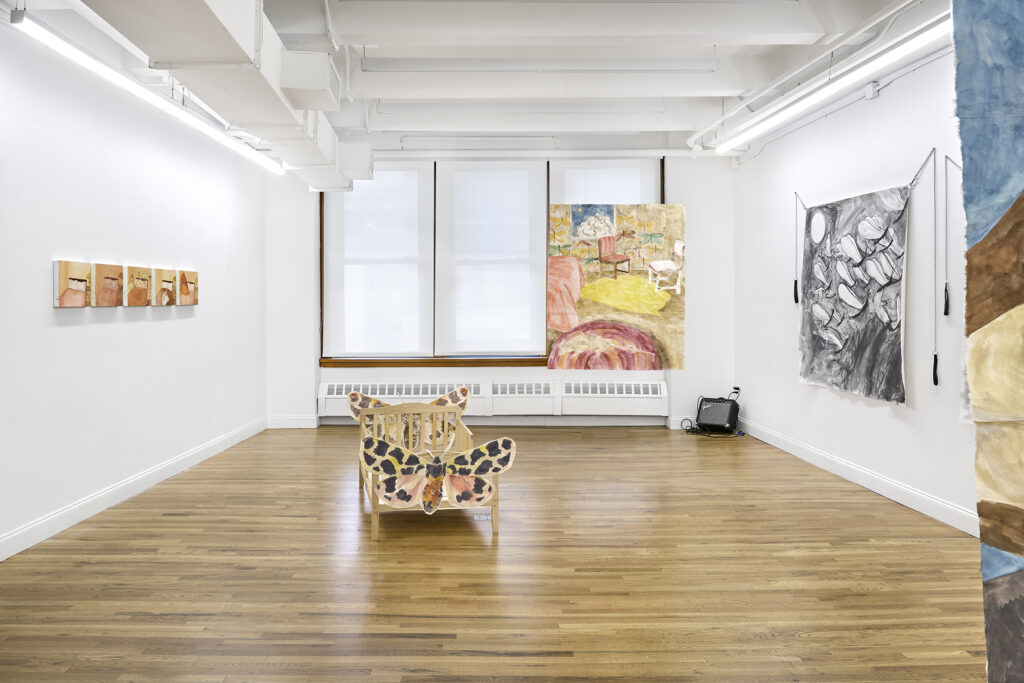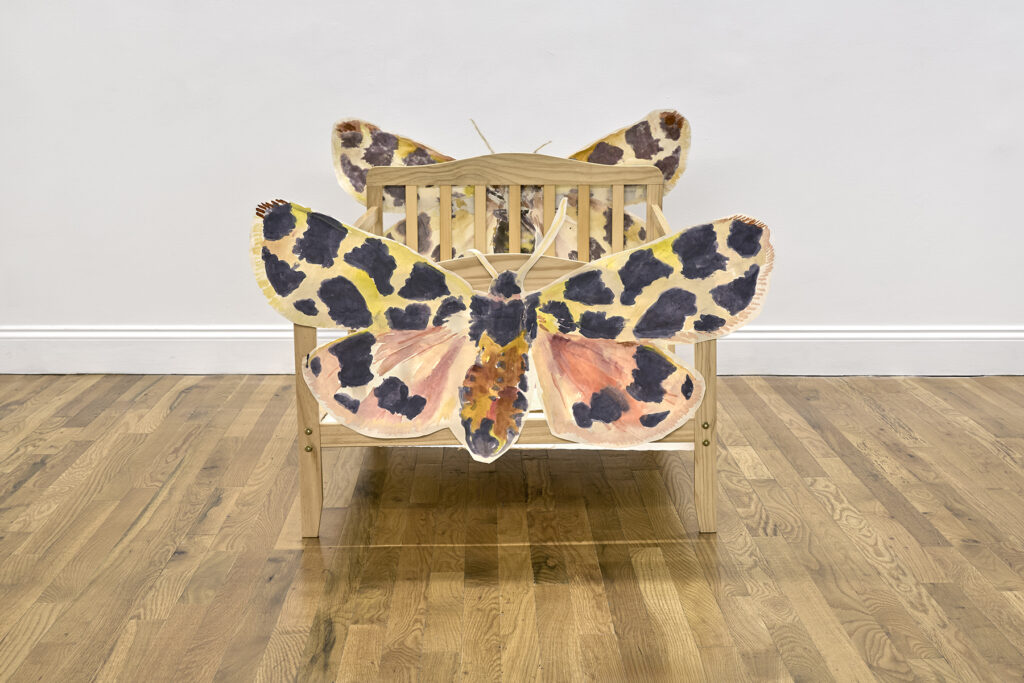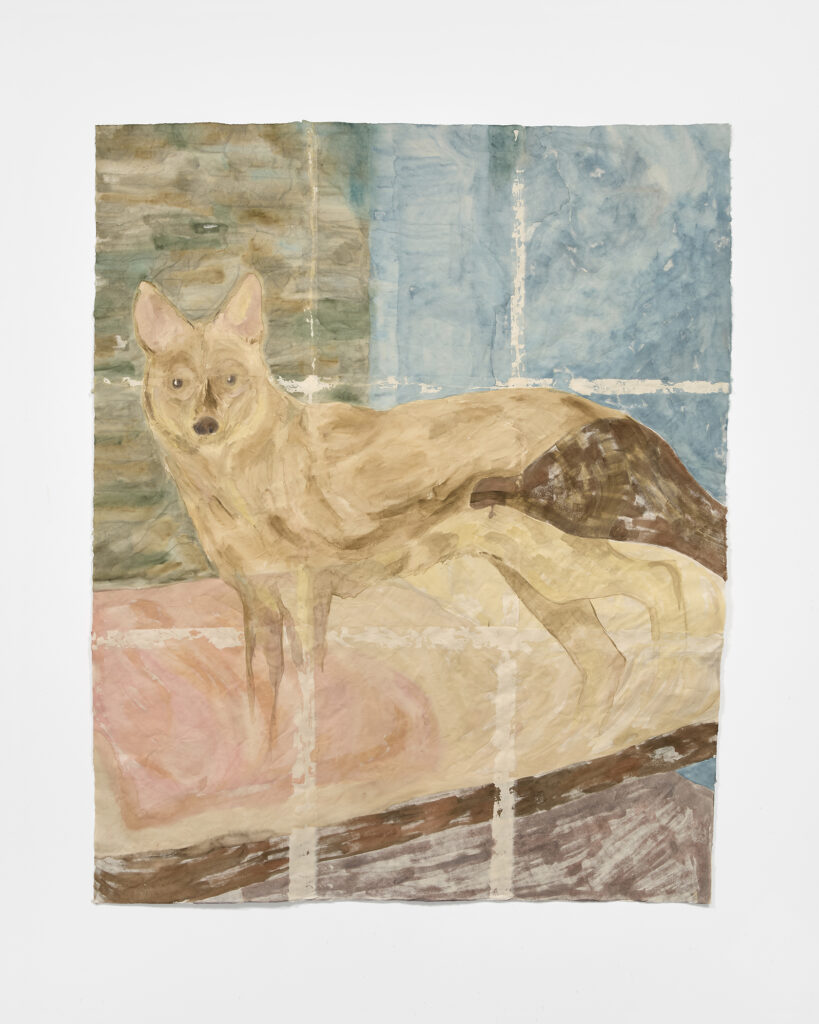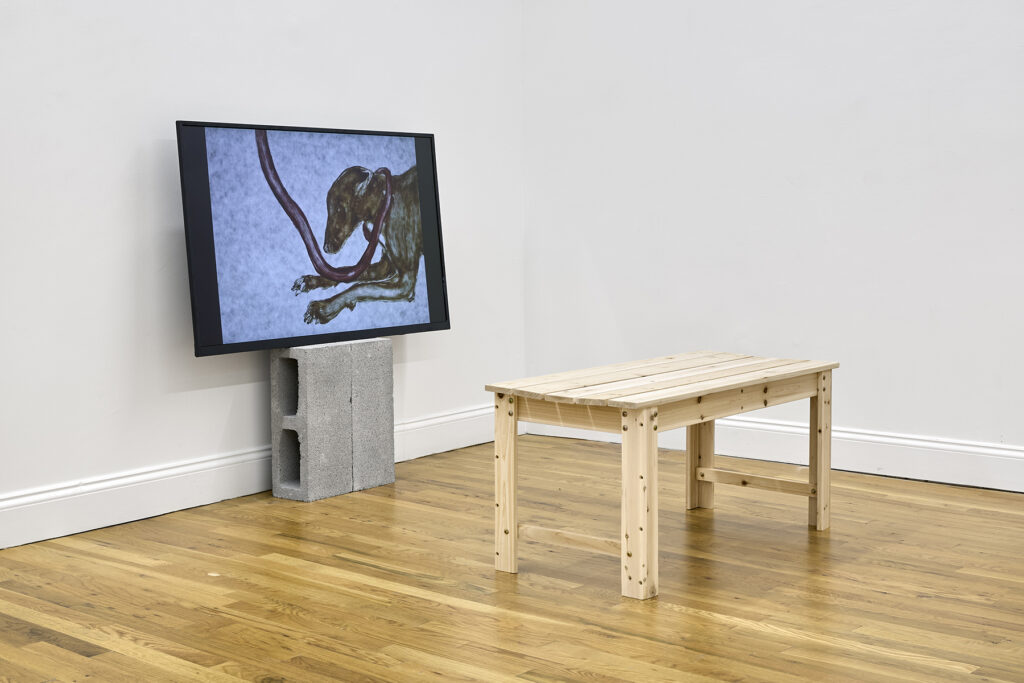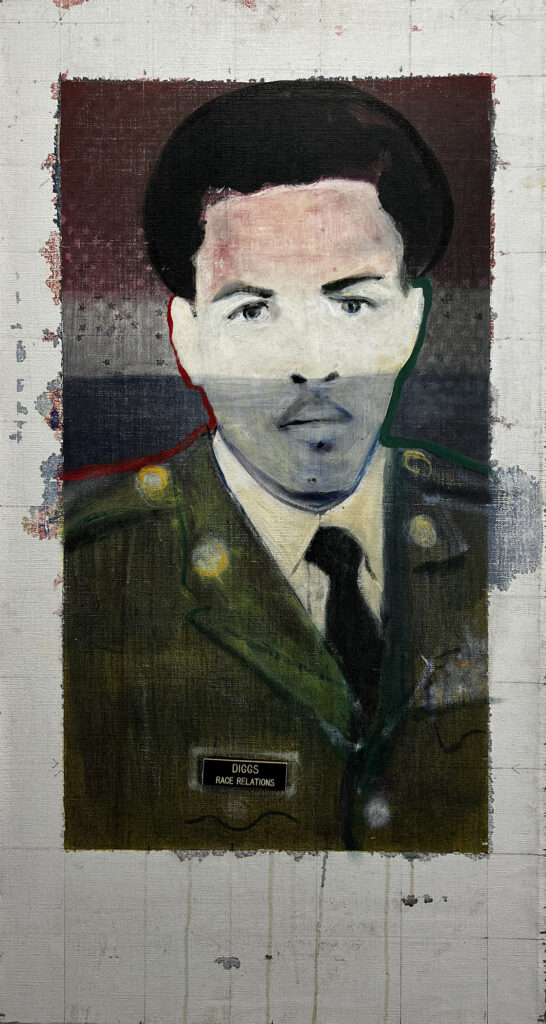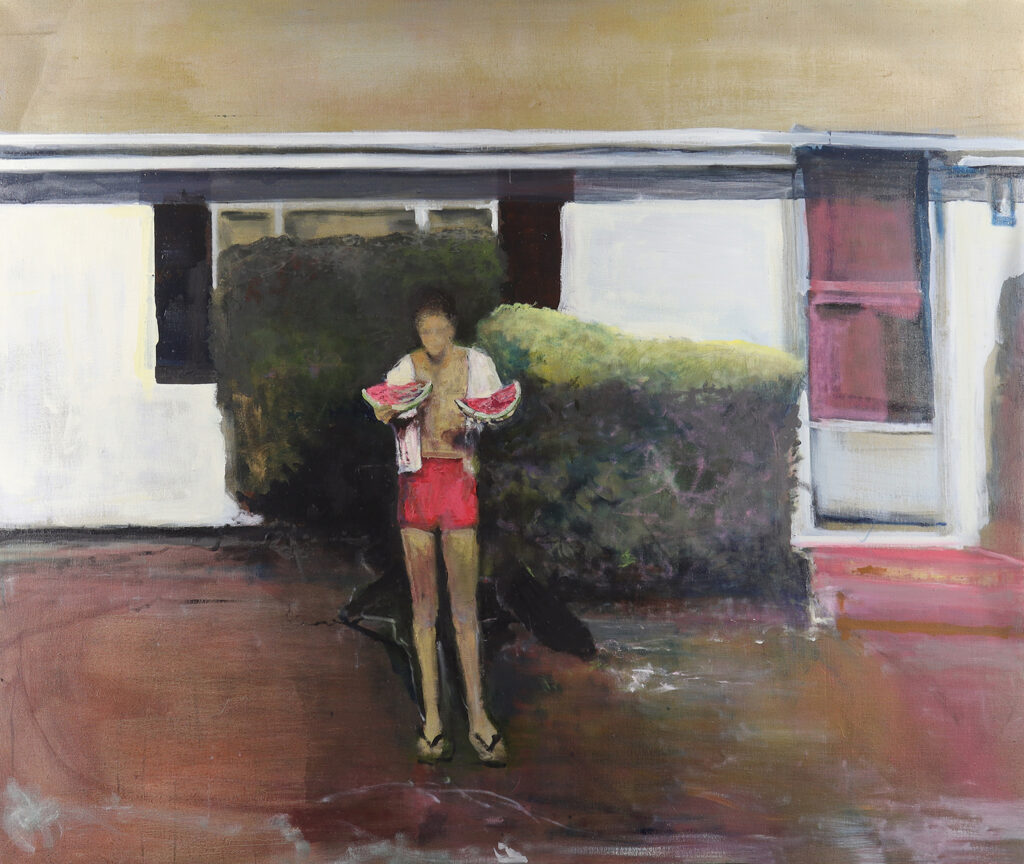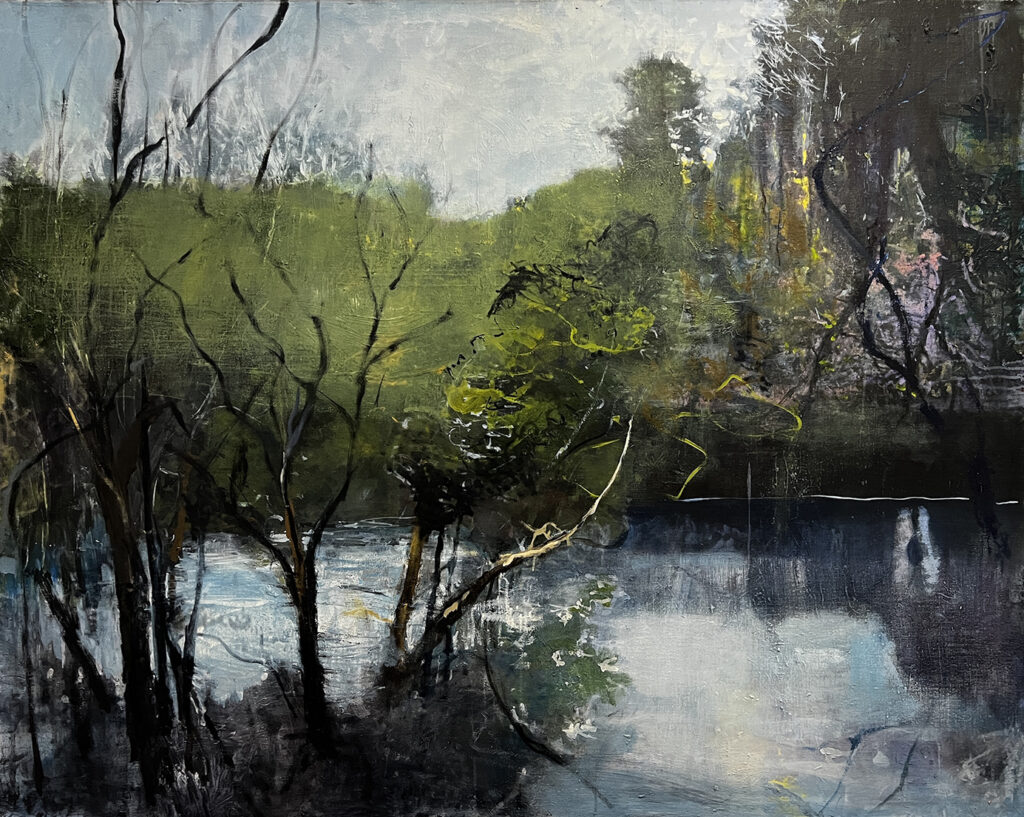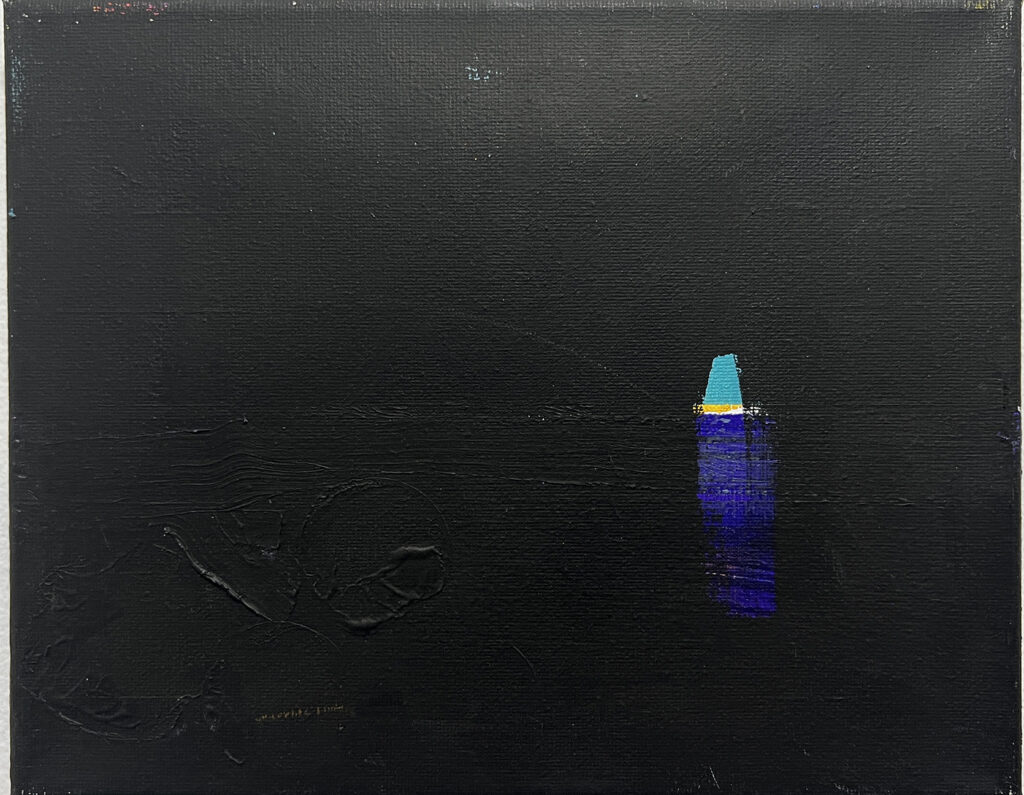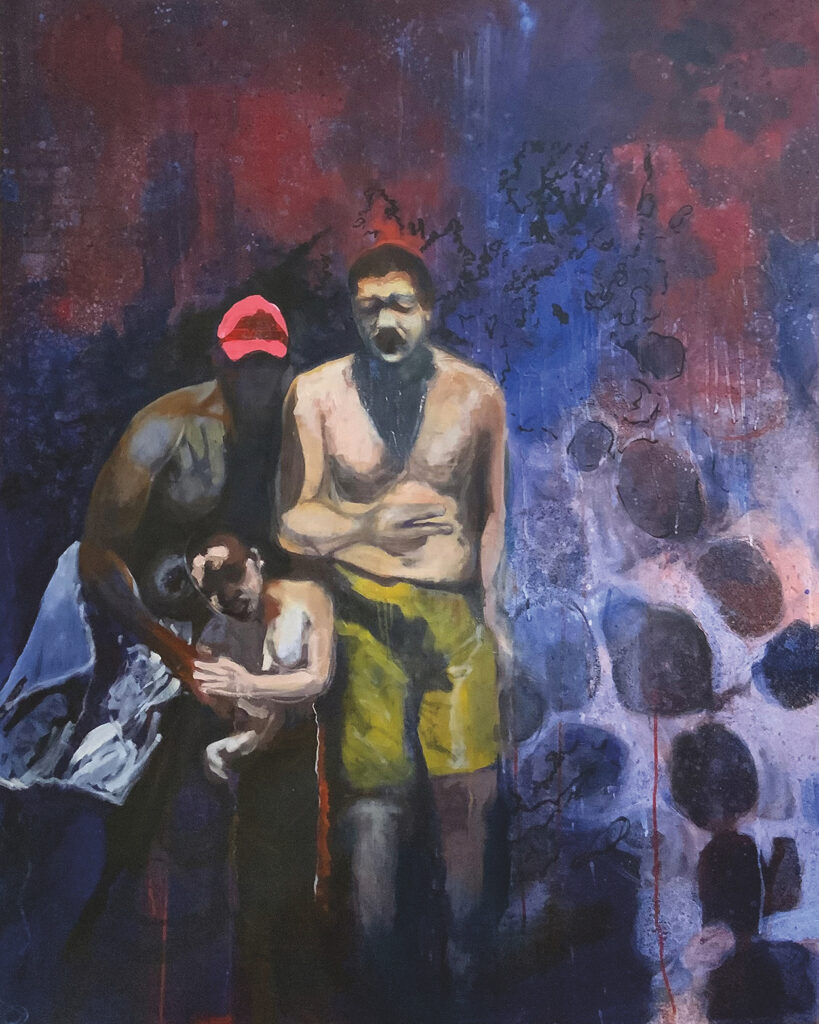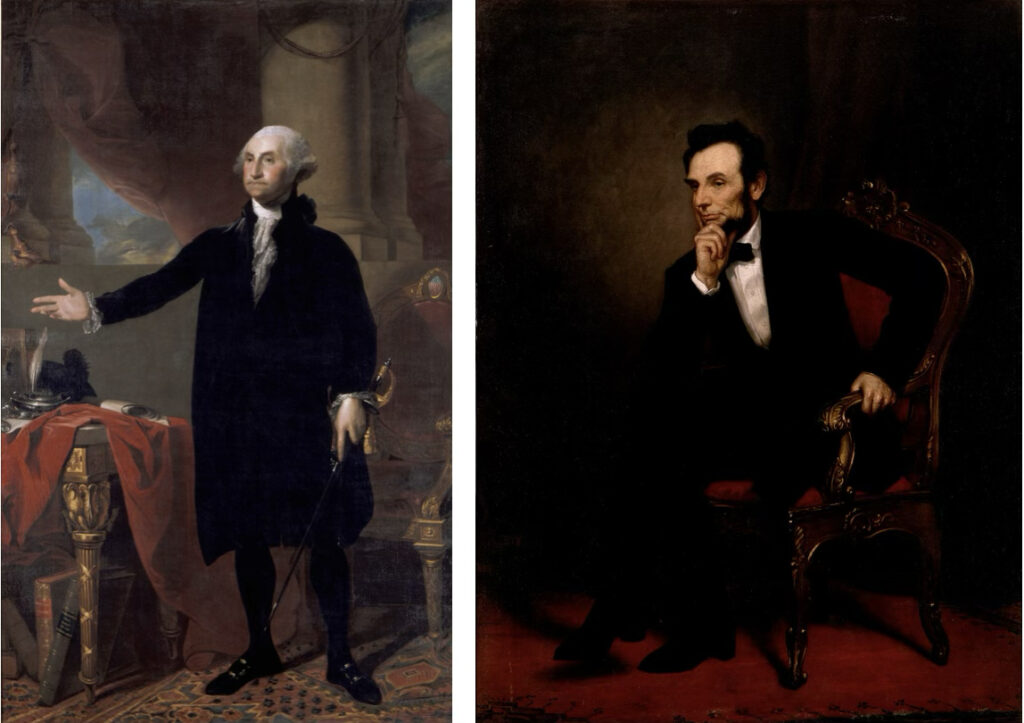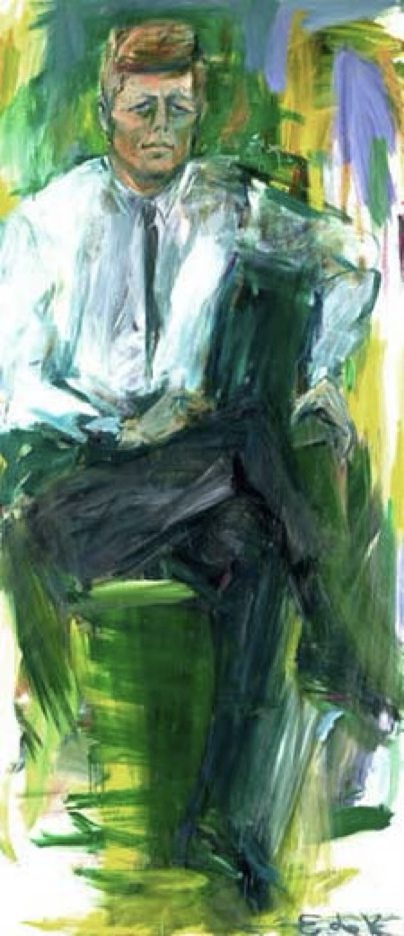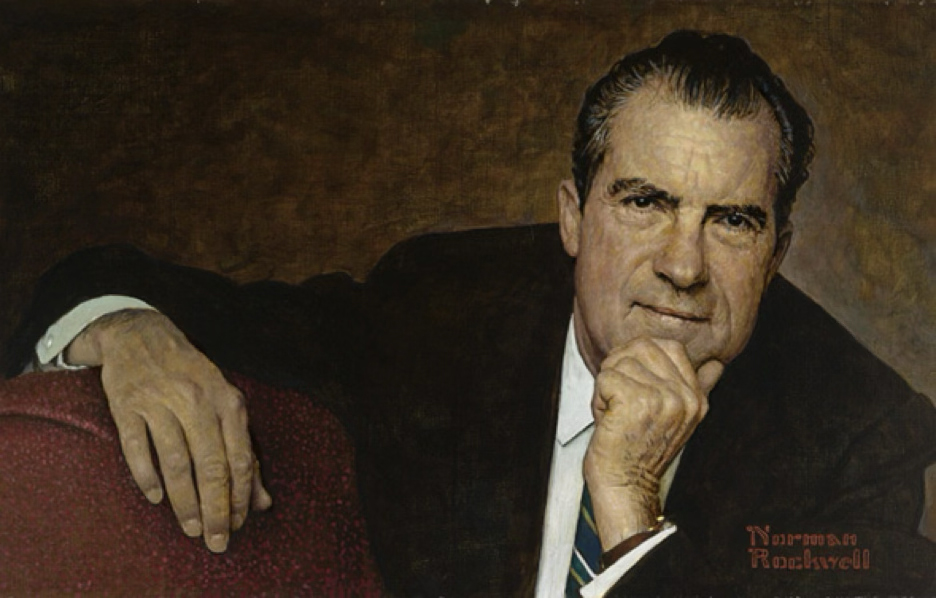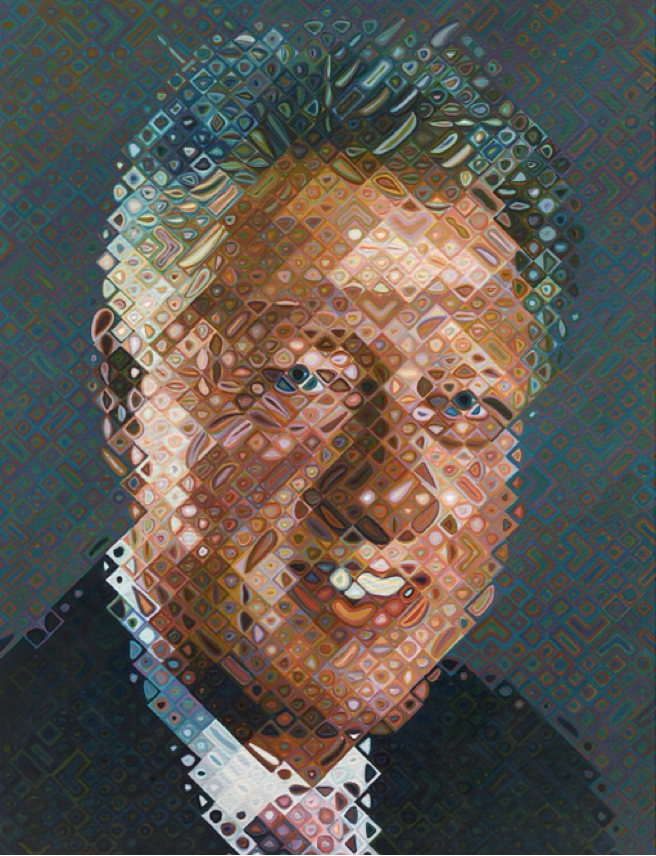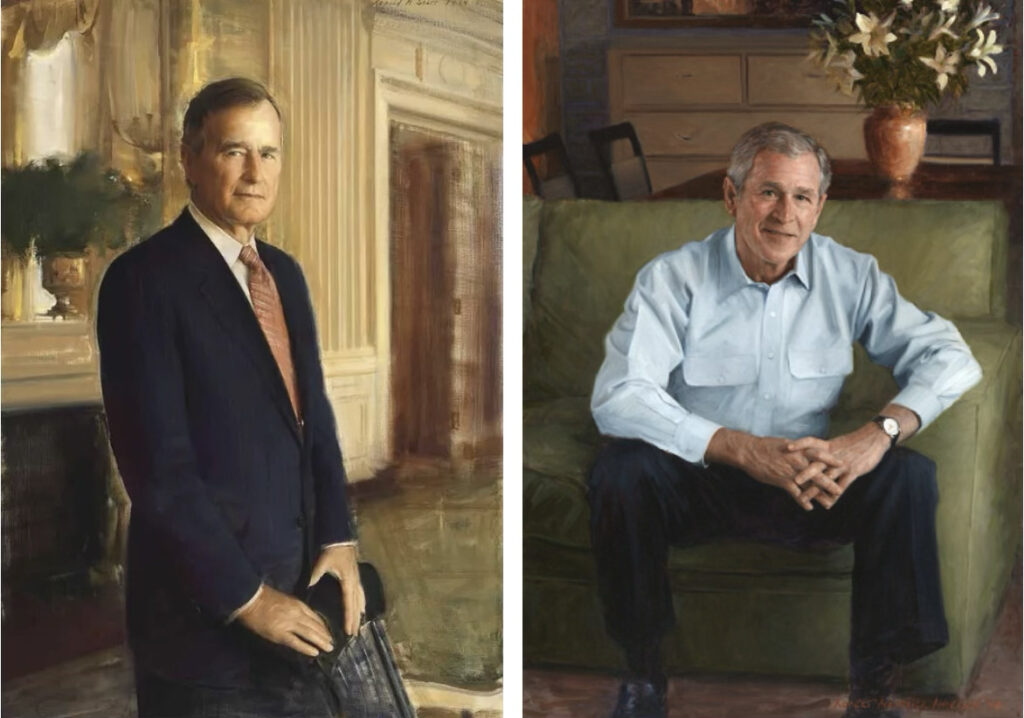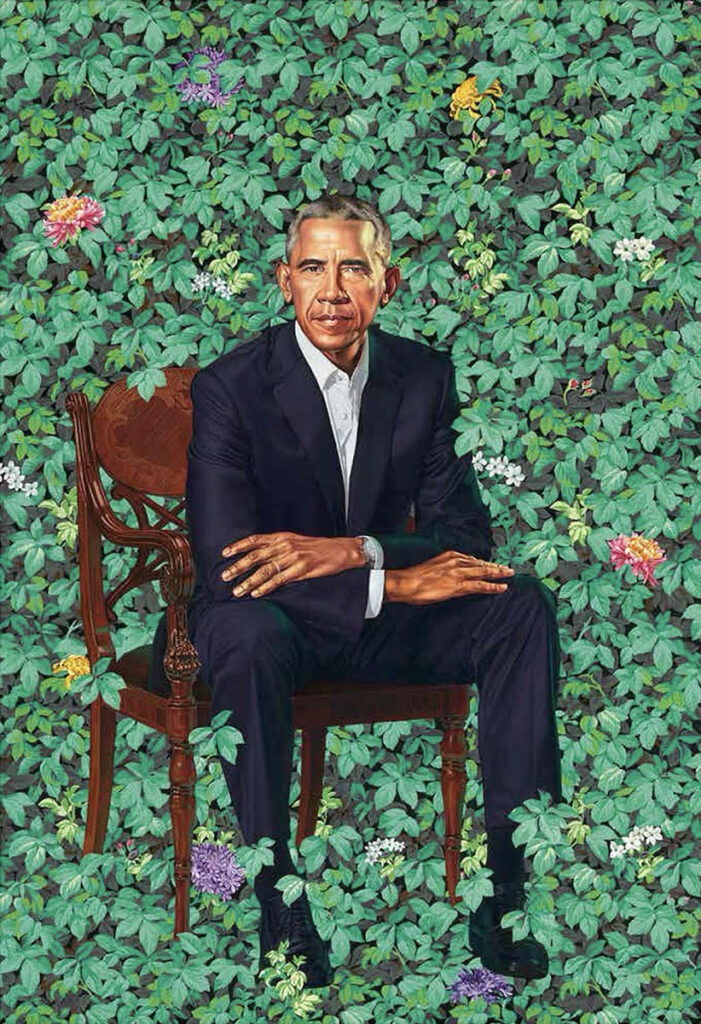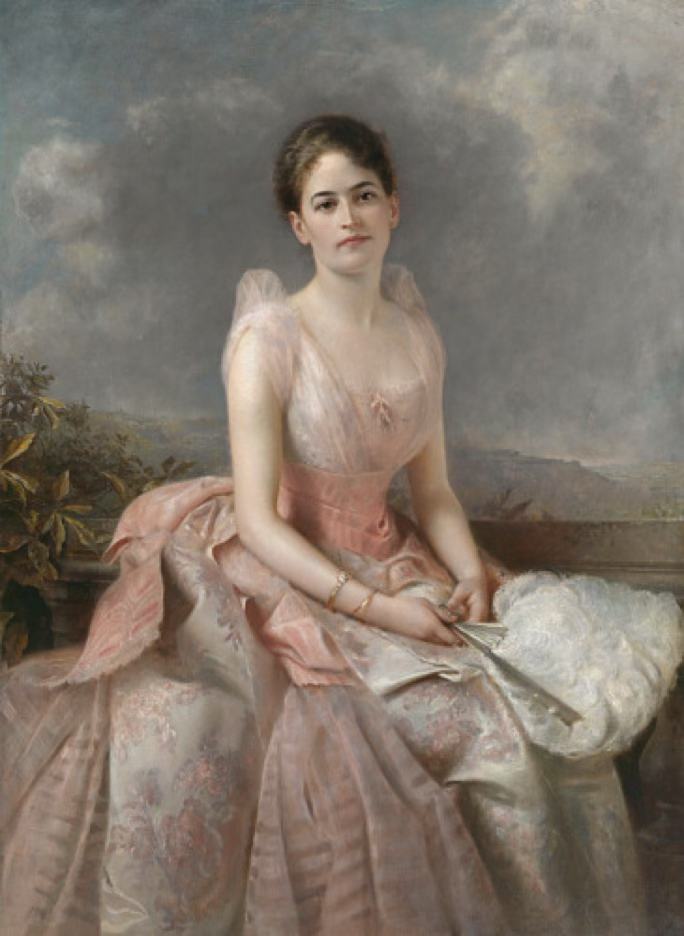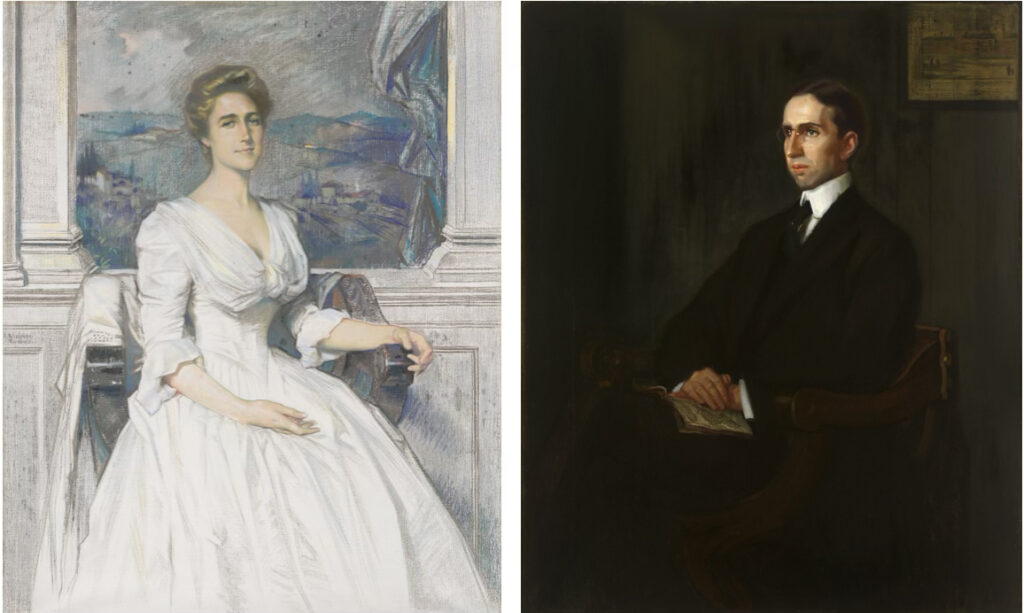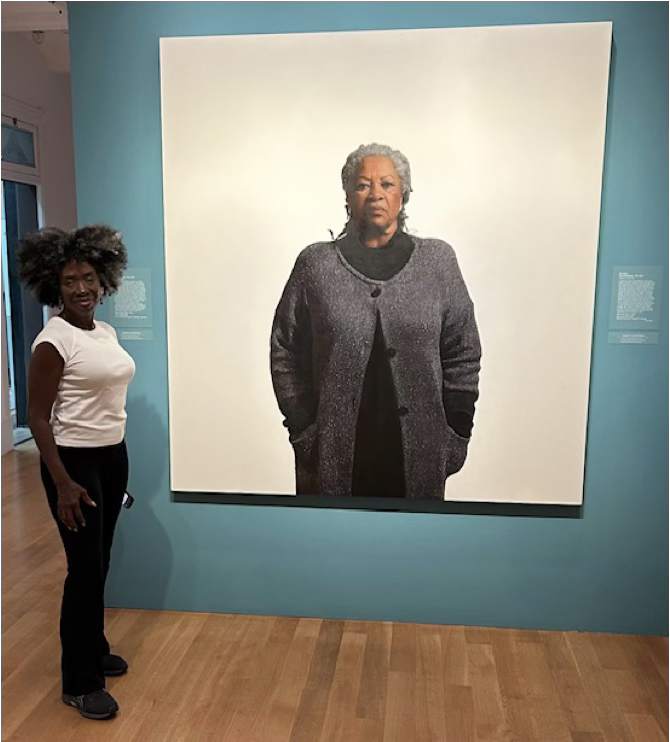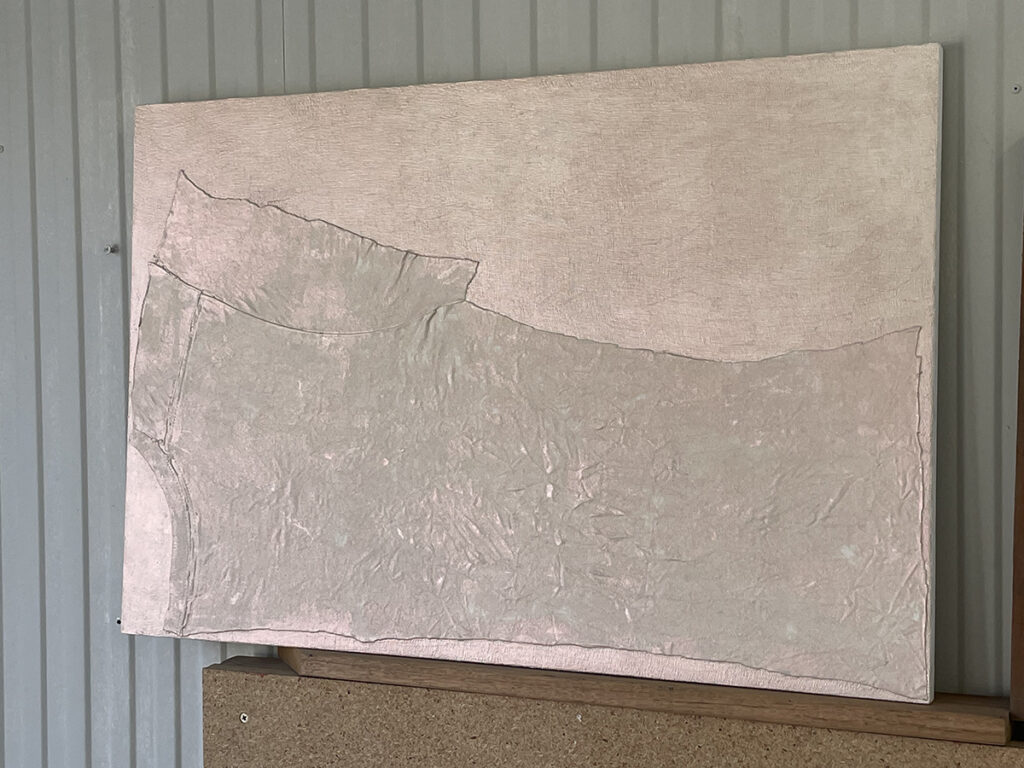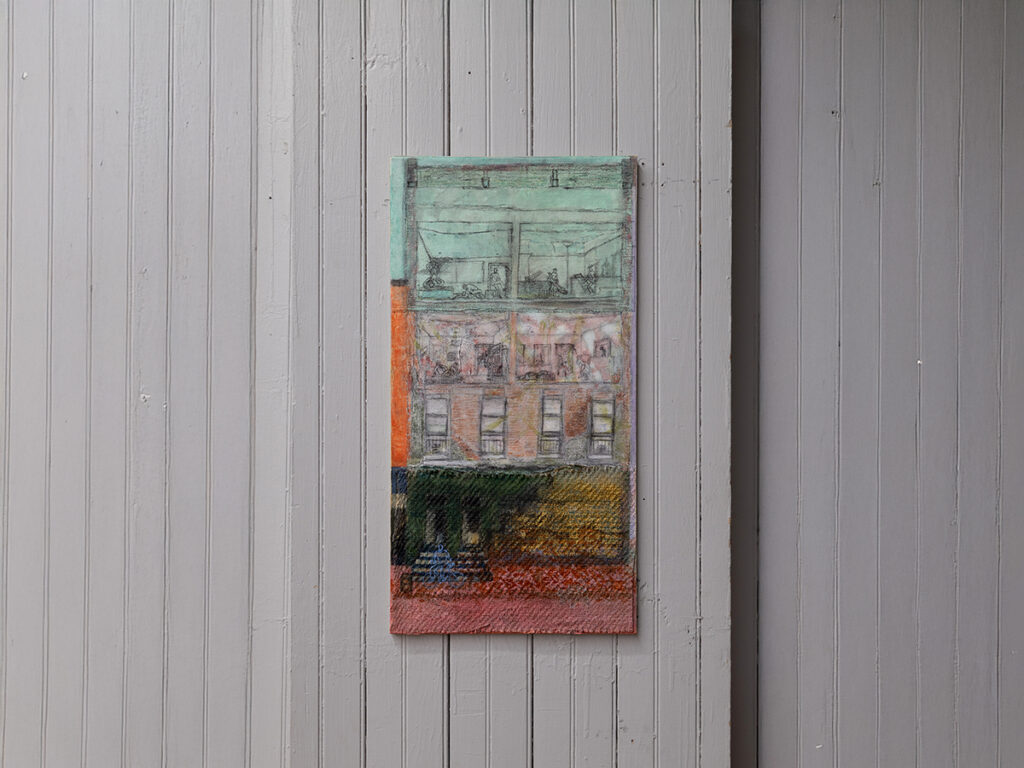by Chunbum Park
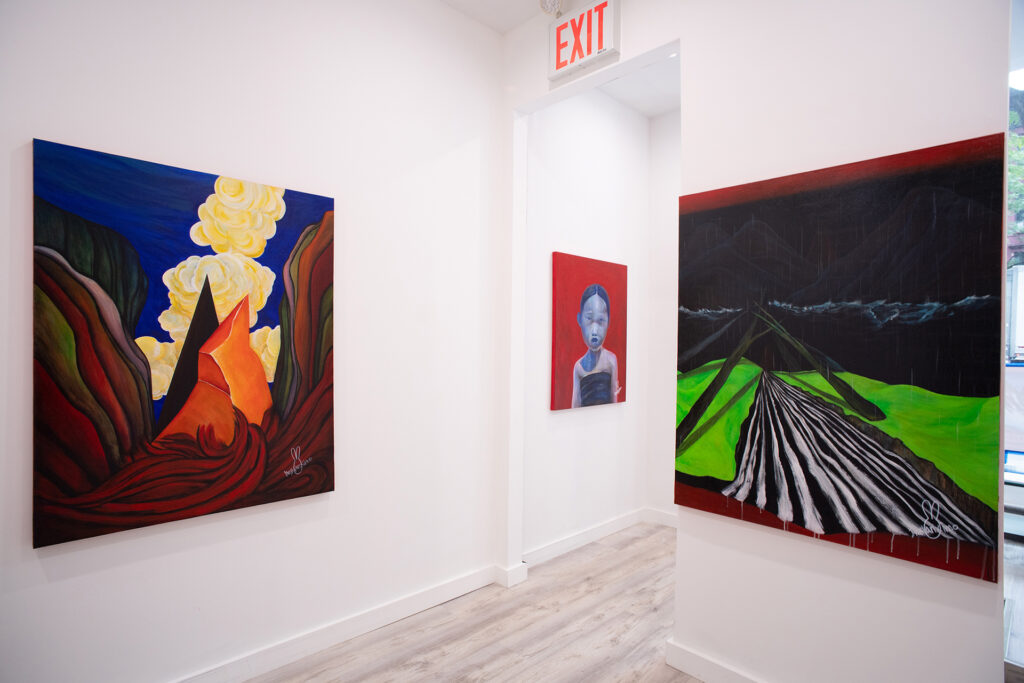
Dressvanximo’s solo exhibition titled, “The Stranger,” at Gallery Wave in NYC is a psychological thriller and surrealistic experience. The Korean artist takes the violence of our encounter with the strangers in the streets and re-packages it as the dream-like landscapes and portraits, which speak of the journeys and encounters from life itself, universally-speaking. Featuring 7 paintings of striking colors and mentality that deal with the uncanny and the relationship between the known and the unknown, the exhibition is a mini survey of the artist’s prolific output.
Born in 1992 in South Korea, Dressvanximo has studied and pursued art for all his life. However, commercial success has been slow for the artist, whose incompatibility with the South Korean market owes to the fact that the artist paints with honesty and style that is aggressively formulated or violently suggestive at times. The collectors in South Korea usually gravitate towards pretty pictures of flowers and calm, meditative landscapes more than Dressvanximo’s straightforward images of skulls, for example, which would imply the rather depressing subject matter of human weakness and mortality.
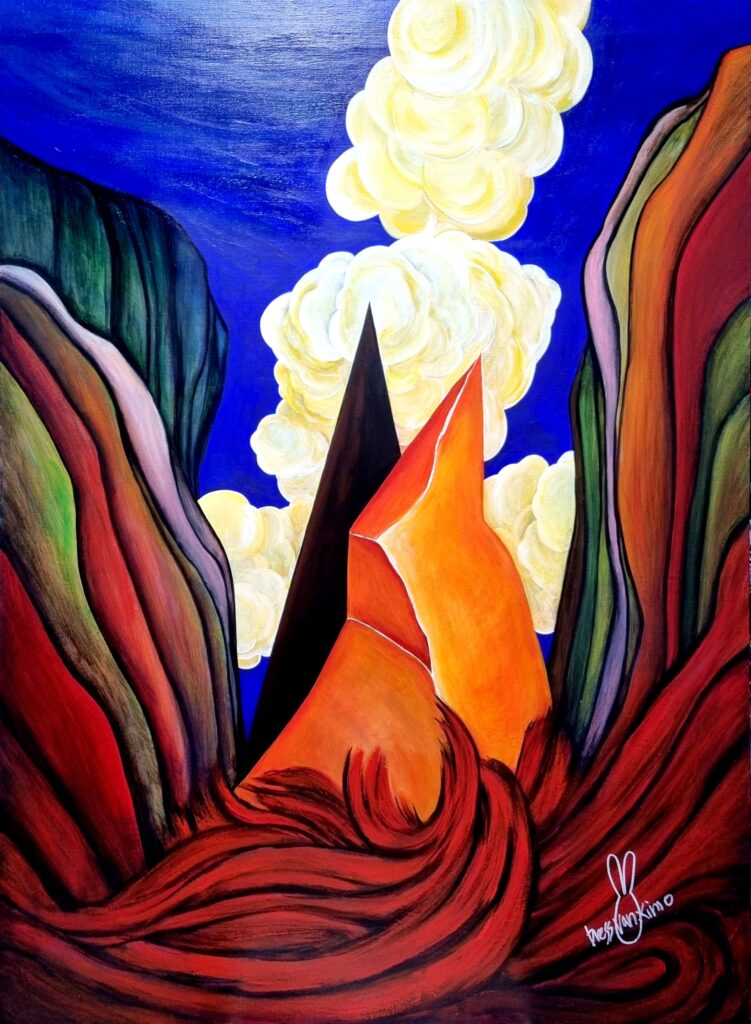
The most striking painting at the exhibition is “Deus Ex Machina” (2025), which is a psychological landscape? The image depicts a simultaneously crystal or lava-like formation juxtaposed to a black, triangular abstract shape and surrounded by a flowing topology with hairlike grooving and a sky with floral cloud patterns. A bit Giorgio De Chirico-esque (in terms of visual style) and a little bit like Salvador Dali (in terms of the content), the painting is the encounter between the familiar and the unknown, between the deja vu and the uncanny, and between the known self and the other (or the stranger). Who is at the core, and who lies outside at the periphery? It is hard to say.
The contradiction of visual language is laid out there for everyone to question and experience: the very act of defining the features of the orange formation (which is either geological or psychological in nature) limits it to just that, preventing us from associating it with anything else; however, the black triangular form is ambiguously formed and abstracted to the extreme (like a question mark) so that we can place ourselves in the black shape’s perspective or position. While, at first, the black shape appears as the unknown other, we slowly find out that the black shape is in fact ourselves and our subjecthood… The external world is already pre-defined, but our subjecthood is ongoing as an undefined operation and open to all possibilities enacted by our free will. Furthermore, it is the object that reflects the most light that is darkest inside, and the black shape is filled with light internally. If light is the symbolic or metaphorical device for the knowable and the self, then the black triangle is the self while appearing as the stranger, and the orange shape is the other, even as it tries to masquerade as the familiar self.
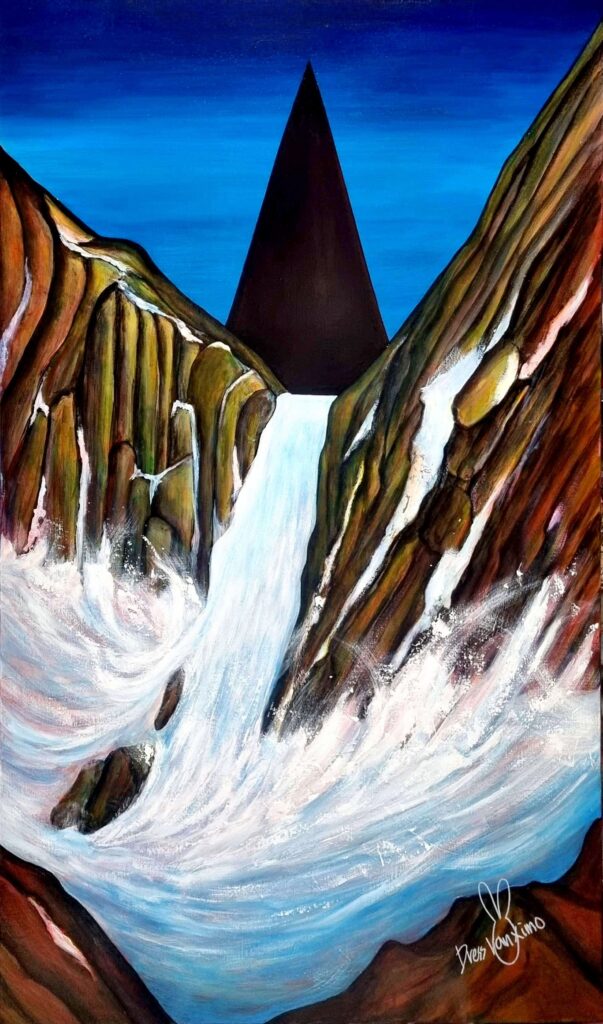
On the other hand, Dressvanximo’s painting with the highest level of depth and finish is “Silence” (2025), which again features the black triangular shape at the horizon, which is beneath the silhouette of the cliffs and the waterfall falling below. What is the artist trying to say with this landscape painting? If the landscape could be understood as a metaphor for identity formation, it appears to speak of the relationship between the self and the other. The encounter between the self and the other could be marked by psychological scars, but what is even more violent is the encounter between the self and the self. Self in relation to self is the most dangerous and risky because it requires greater honesty, strength, and integrity, to not sugarcoat one’s shortcomings as strengths or to mistake one’s honesty as a weakness. Brushing off one’s own failures in the form of self-praising propaganda invites more blunders, failures, and hurt in the future, so the healthy formation of a strong identity requires a high degree of honesty, rationality, and good intent.
It could be argued that the black color of the abstract geometric shape, which serves as a marker for the self in relation to the external world, assumes a secondary metaphorical purpose. It would be to illustrate the artist’s own frustrations and qualms with the South Korean society and art world, which has been messed up inside and out by money and power (like all capitalistic societies, including the US). Has the market hijacked the virtuous language of art to generate value with value, allowing for a cyclical feedback loop with influencers promoting their mediocre children for a great sum of money, and blind critics praising “art” corrupted with money and notoriety like automatons? The artist believes so.
The figures are equally compelling works, which include a portrait of a Korean boy surrounded by lions (“A Black Bird Covered the World” (2024)) and a painting of a girl based on a a historical photograph from the Korean War (“Innate Goodness, Innate Evil” (2024).
In the case of the boy, we observe the great anger and hatred for both the other and the self, which stem from the great violence of chasm of difference in power. The boy is completely helpless against the lions, so the situation requires greater strength from the boy to acknowledge the weakness of the self… greater than the combined sum of the powers of all the lions in the scene. Indeed, yin and the yang are intertwined, and the sheep assumes the role of the lion, while the tiger is in fact the rabbit, underneath the mask of the predators’ faces. The boy, in the moment of acknowledging the defeat of the self, perishes with great pain and psychological damage as he is eaten by the lions as food and a piece of meat. Yet, in the same instance, the boy garners enough power to not only survive the destruction of the ego but also protect it with an unbreakable shield (of wisdom and love).
In the case of the girl from the Korean War, she is somehow reminiscent of the comfort women who were taken into sexual slavery during the Japanese occupation of Korea. This is just as “The Scream” (1893) by Munch somehow magically foretold the self-destruction and the subsequent nihilism of Europe (and the world) during the greater wars that followed in the 20th century.
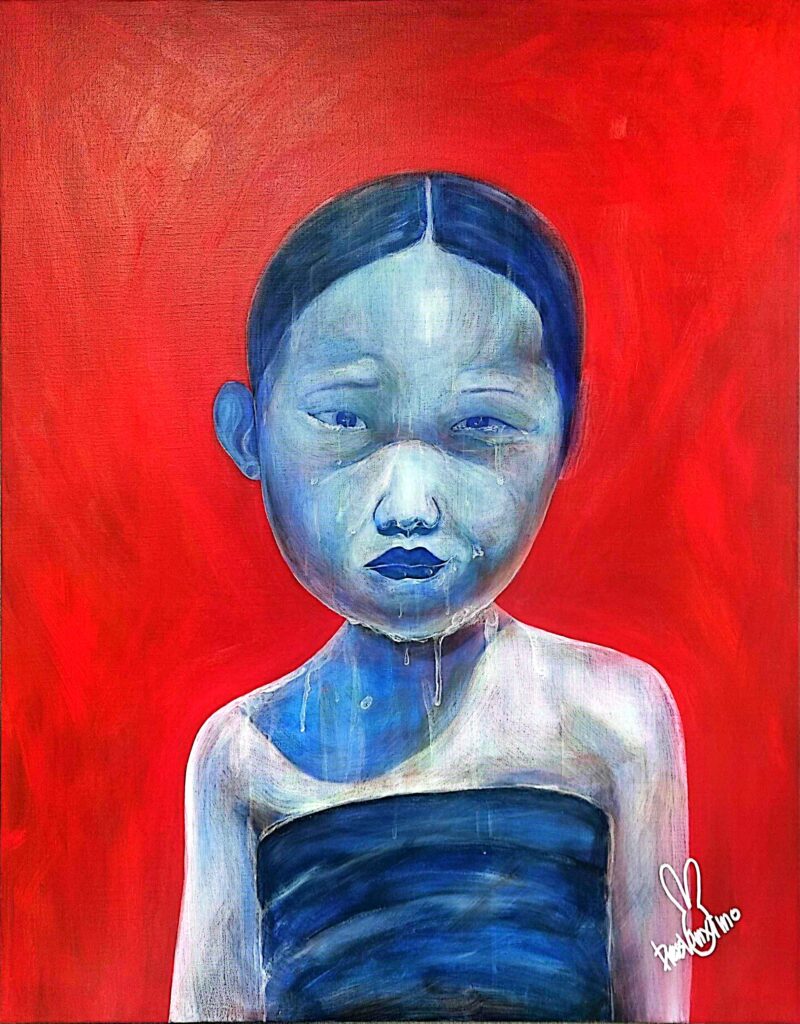
As the artist points out, her left eye and her right eye are slanted in different angles, which is suggestive of good and evil in the same face. This is a great, earnest study of the self that acknowledges both the capacity for good and evil, and the light and the darkness of the self. The self’s future is not predetermined, due to the unpredictable nature of free will and quantum physics, but the image of the self can be summed up as an archetype of a fox or a lion (or a wolf or a tiger). The core of the self is quintessentially a tendency or a force (like acceleration) that generates a particular trajectory over a series of events or circumstances.
The discussion between the self and the other and the self and the self provides a new way of understanding the difference between and the nature of good and evil. What is good? What is evil? What is the self and the other in relation to these concepts or values?
How do we try to use propaganda and linguistic tricks to repackage our own mistakes as good and others’ trials as failures? What is the true nature of the self that wants to be a tiger and a king, even if this requires the expense of others, who are relegated to a lesser role?
Buddha prior to his divine state of enlightenment was Siddhartha Gautama, and he escaped the palace although he was a prince because he wanted to solve the suffering of all of mankind. Jesus Christ also asked his disciples to give up material wealth and to follow only him and his spiritual word. This is exactly the opposite of most people who are materially concerned and worship money and power. The difference between good and evil, between tiger and fox, and between the king and the subject… lies in the nature or the character of the core of being and existence.
What we learn from Dressvanximo’s works and self investigation is that the king is not king, power is not power, truth is not true, and the self is not the self that we think we know. Furthermore, the distinction between the self and the other is much less than the difference of understanding and repackaging the self as self… between the self and the self.
What we finally understand is the virtuous must master the art of the lie, while the conmen must understand the principles of truth. Power is the art of letting go of power, and the yin and the yang of the cosmos brings us to a full circle from a position of weakness to strength and back to weakness in ever-fluctuating changes of paradigms. The Nazis of the European theater and the Japanese soldiers in the Asia-Pacific during World War II are not so “evil” or different from the less evil others who may fantasize violent pornography or follow the orders of a fascist dictator-wannabe on a morning in January. Evil is not necessarily purely evil, and good is not entirely good. Purity of thought is not healthy or feasible. Justice is not a pure concept. It is not so straight-forward.
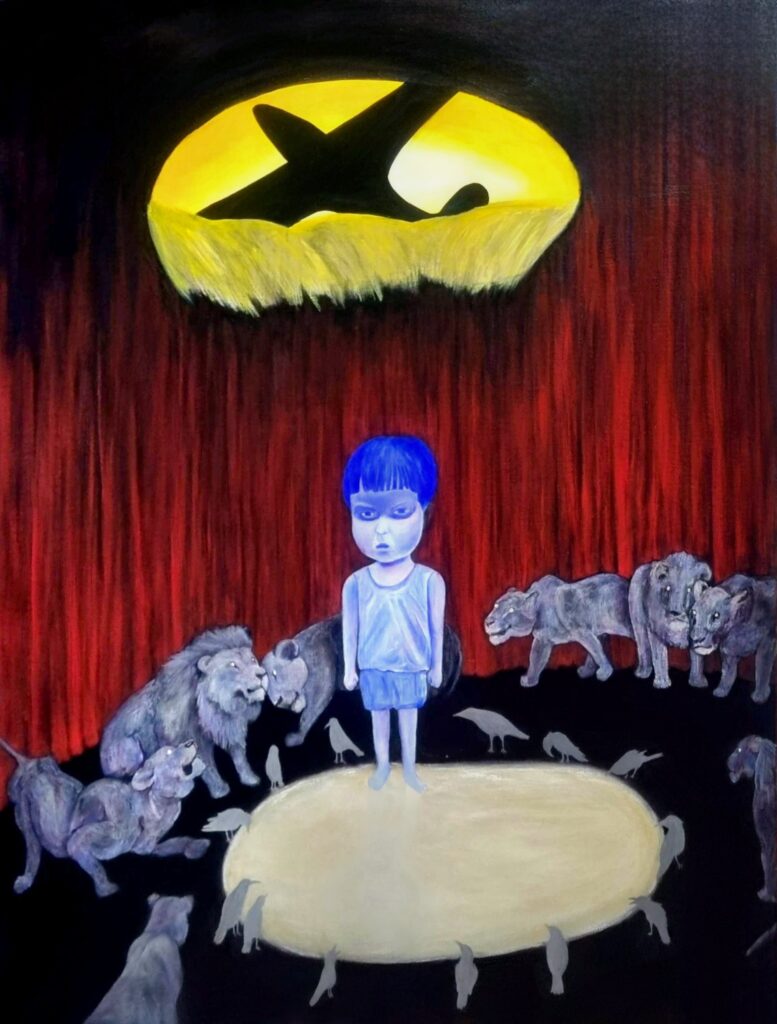
Yet, the arrow of justice is there. It points to a direction of what is good based on the sum of all events and situations. It is a human concept and intuition.
Within the complexity of the world, which is exacerbated with the rise of AI, fake news, and fascism, artists like Dressvanximo demand greater honesty, sincerity, and engagement with the world. Who are we? Where do we come from? What are we capable of? Are we the good guys or the bad? What is human nature?
It is a human who could hurt another human and then contemplate the nature of this wrongdoing in relation to the self. The human speaks from the heart a tormented scream, just like Munch’s iconic painting… a life lived and decisions made demands transparency, strength, and integrity because we are human, and it is human nature to seek the arrow of justice and love, wherever it might be headed.

